Headphones & Earphones Tutorial
Headphones, earphones & headsets are used to provide audio to one person cutting some extraneous noise and preventing annoyance to those around
Earphones, Headphones & Headsets includes:
Introduction to earphones & headphones
How do earphones / headphones work
Wireless / Bluetooth headphones & earphones
Noise cancelling headphones & earphones
Headphone specifications
How to buy best headphones / earphones for you
Headphones earphones and headsets have been around for many years - they have been used since the very earliest days or radio, and have been considerably developed over the years.
Nowadays there is a huge choice of headphones, earphones and headsets - something for everyone in a host of different environments.
There are headphones and earphones for many forms of audio visual situations: listening to music at home, music on the go, audio and video editing, for receptionists and others requiring a microphone as well, and many more types for a host of different applications.

The first headphones
We all accept the idea of headphones and earphones and many of us use them all the time. However they have not always been available as a standard electronic component.
The idea of headphones started with the introduction of te first telephones. Telephones themselves had an earpiece which needed to be held to the ear.
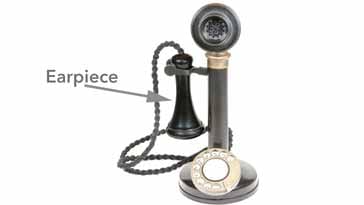
Also the telephone operators who used to connect all the calls also needed earphones. In fact the first ones were
The first audio headphones as such were developed by Nathaniel Baldwin in 1910. Recognising their advantages, the U.S. Navy ordered 100 pairs them.
Initially headphones were quite uncomfortable and very utilitarian. They were widely used with crystal radio sets int he 1920s and 1930s and later in the Second World War as they enabled radio operators to concentrate better ont he signals being received.
The next major breakthrough came when an American named John Koss developed a stereo headphone - these were quite luxurious as they also included a cushion to make them more comfortable to wear and increase the sound isolation. These were possibly the first headphones produced that were intended for music listening - previous ones had been aimed at radio communications and basic radio usage.
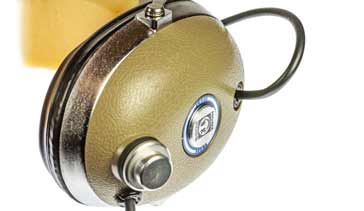
Headphone development continued and was driven forward by the introduction of items like the Sony Walkman in 1979 and later MP3 players and the iPod. With music being consumed increasingly on the move, smaller headphones and and earphones became more widespread.
Later introductions included wireless headphones or Bluetooth headphones and noice cancelling headphones to improve the listener experience.
Headphones, headsets & earphones
Headphones, headsets and earphones are used in many areas associated with audio visual equipment and systems: they are quite similar in their function and the words may be used interchangeably at many times, but there are some key differences between them.
Headset: A headset is essential a pair of headphones that includes a microphone. The term headset tends to imply that the microphone may be mounted on a short boom to the side which can be positioned as needed, but the microphone could equally well be an inline microphone.
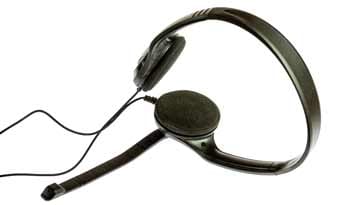
Headset with microphone - these headsets are often used when making video / videoconference calls. Headsets are ideal for applications like receptionists or for call centres where the wearer needs to hear the caller and the caller needs to hear a clear voice without high levels of noise from the surroundings. Headsets are also very useful for many Skype or similar communications to cut the external noise and reduce echo, although modern phones are able to handle this very well.
Headphones: Headphones themselves are essentially a pair of small speakers that are attached to a band that is positioned across the wearer’s head to enable the speakers to be positioned over the ears. Normally there are cushions that are placed around the speakers and over the ears for comfort and sound insulation.
Headphones provide a very personal and what may be termed immersive listening experience. Unlike true loudspeakers, headphone transducers do not need to move large volumes of air and therefore they can deliver a very impressive sound. However the experience is different to that of speakers as the sound is heard in the plane of the headphones and does not come from in front of behind.
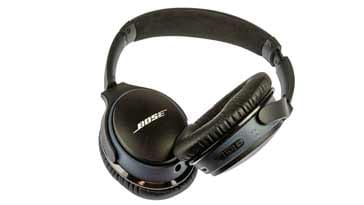
Over-ear headphones Headphones are often used with higher end audio visual applications. Often they are used for serious music listening, in studios, for audio and video editing and many other applications. They are also used for music on the go, and can often be used with a wireless connection, i.e. wireless headphones / Bluetooth headphones, where the lack of a connecting lead makes them easier to use.
- Earphones: The term earphone has now come to describe the form of transducer that has dispensed with the cushioning and consists of a small earpiece that fits into the ear itself. This makes the transducer / ear connection even more direct and the earphones or ear pieces need to move even less air.
Earphones can be made to be very small - they can easily be carried in a small pocket when not in use and they are much less bulky to wear than traditional headphones. This makes them ideal for those travelling about on public transport, etc, for runners and the like. They can easily be powered by mobile phones or other music players and as such they are ideal for music on the go.
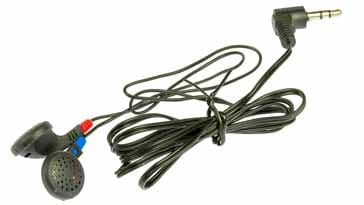
Low cost in-ear earphones There is a very wide variety of earphones available for purchase from the very low cost items, to those that are expensive, but produce very high quality audio.
Headphone and earphone capabilities
There are also other capabilities that can be introduced into headphones and earphones to make them more convenient to use.
Noise cancelling headphones & earphones: Noise cancelling headphones have the very attractive feature that they are able to remove much of the external noise by electronic means. They sample the noise outside the headphone and then use this to apply an equal and opposite signal into the headphones, thereby cancelling the noise.
Noise cancelling headphones provide significant levels of noise reduction and as such they are ideal for use when commuting, air travel or anywhere that there may be high levels of noise. Noise cancelling versions of both headphones and earphones are available.
Read more about . . . . Noise Cancelling Headphones.
Wireless headphones: One of the issues with headphones and earphones is the wire that is required to connect the headphones or earphones to the sound source. Wireless headphones achieve this connection using a small wireless link - typically a Bluetooth link. As a result, these headphones are often referred to as Bluetooth headphones.
The headset needs to have battery power and this is often achieve bay installing a lithium ion rechargeable battery. Charging can be achieved in one of a number of ways dependent upon the headphone. It is wise to look after the batteries as they are normally not replaceable.
Read more about . . . . Wireless headphones.
Noise cancelling headphones and wireless headphones / Bluetooth headphones tend not to be used for studio work as they may introduce some levels of distortion to the signal. Bluetooth uses some compression of the audio signal and therefore may not be considered suitable for the very high end audio visual applications.
Also noise cancelling headphones will try to cancel out unwanted noise and as a result may introduce some unwanted elements tot he audio. That said, both Bluetooth headphones and noice cancelling headphones can provide very high quality audio and are ideal for most situations.
There are many different types of headphone and earphone that can be obtained. Often the choice of what is suitable comes down to personal likes and the actual usage of the headphones or earphones.
Headphone & earphone technologies
There are several different technologies that are being used and have been used for headphones and earphones over the years. Each technology has its own advantages and disadvantages, although the number of technologies used for most headphones and earphones these days is relatively small.
Moving coil: This type of earphone technology is the most widely used. It uses the same technology as that used for moving coil loudspeakers.
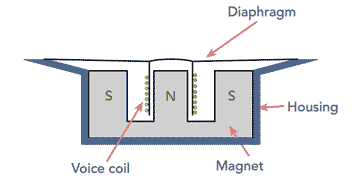
Cross section of a typical moving coil headphone or earphone Essentially a current is passed though a movable coil which is held ina static magnetic field. As current is passed though the coil, forces are set up causing vibrations which are then passed to a diaphragm which is physically connected to the coil.
Planar magnetic headphones & earphones: This type of headphone / earphone driver technology uses a thin diaphragm with an embedded conductor suspended between magnets either side. As the diaphragm can be amde very thin, they respond very accurately to the sound signal passing through the conductor.
Balanced armature: This type of headphone or earphone driver was initially developed for use with hearing aids. As the headphone drivers are small, they are ideal for hearing aids, although they are also used for in-ear monitors, etc.
Piezoelectric earpiece: This type of earpiece is often called a crystal earpiece because it uses a piezoelectric crystal to convert the electrical variations into sound.
Although these are some of the major types of earphone and headphone technology, there are a number of other approaches and designs that have been used and are still being used for some products.
Earphone & headphone specifications
When selecting or comparing different headphones and earphones there are several different specifications that are important. The type of headphone or earphone, the frequency response, impedance, and a variety of others are all important when trying to select the right one.
Understanding the different specification parameters is key to being able to make a good decision about which set of headphones of earphones to select. The level of performance also needs to be balanced against the cost, as performance nearly always comes at a cost.
Right & left markings
It is important to have the earphones of headphones the right way round. In this way the stereo image will be orientated in the right way. Although it may not matter to some, having the stereo image the right way round can be important so that the right instruments come fromth e correct side, etc.
Many earpieces, etc are marked with the letter "L" for left and "R" for right, but some are colour coded.
To convention is the red is used for the right channel and blue for the left. It is easy to remember this because both red and right start with the letter "R".
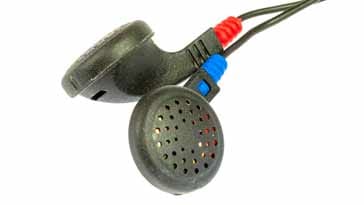
Red = right Blue = left
Even with the colour code, many, but not all earphones are also marked with the L and R letters to identify left and right. It is just a few earphones that are probably only colour coded.
Headphones and earphones are used for everything from listening to music and other content on devices like mobile phones, etc when on the move, to more demanding applications like serious music listening, audio and video editing and the like. A variety of headphones and earphones are available to suit all needs and they are available at prices to suit all pockets.
More Audio Video Topics:
HDMI
SCART
DisplayPort
DVI
Loudspeaker technology
Headphones & earphones
Bluetooth speakers
Stereo sound
Microphones
Audio compact cassettes
Vinyl record technology
Digital radio
DVB television
Return to Audio / Video menu . . .


